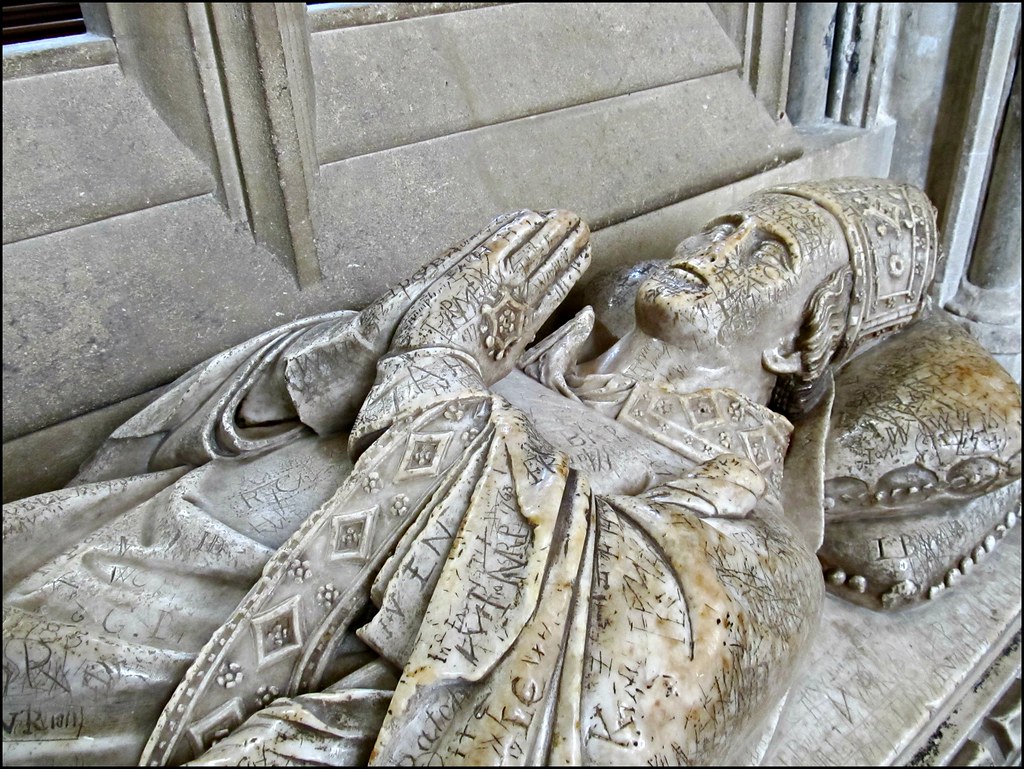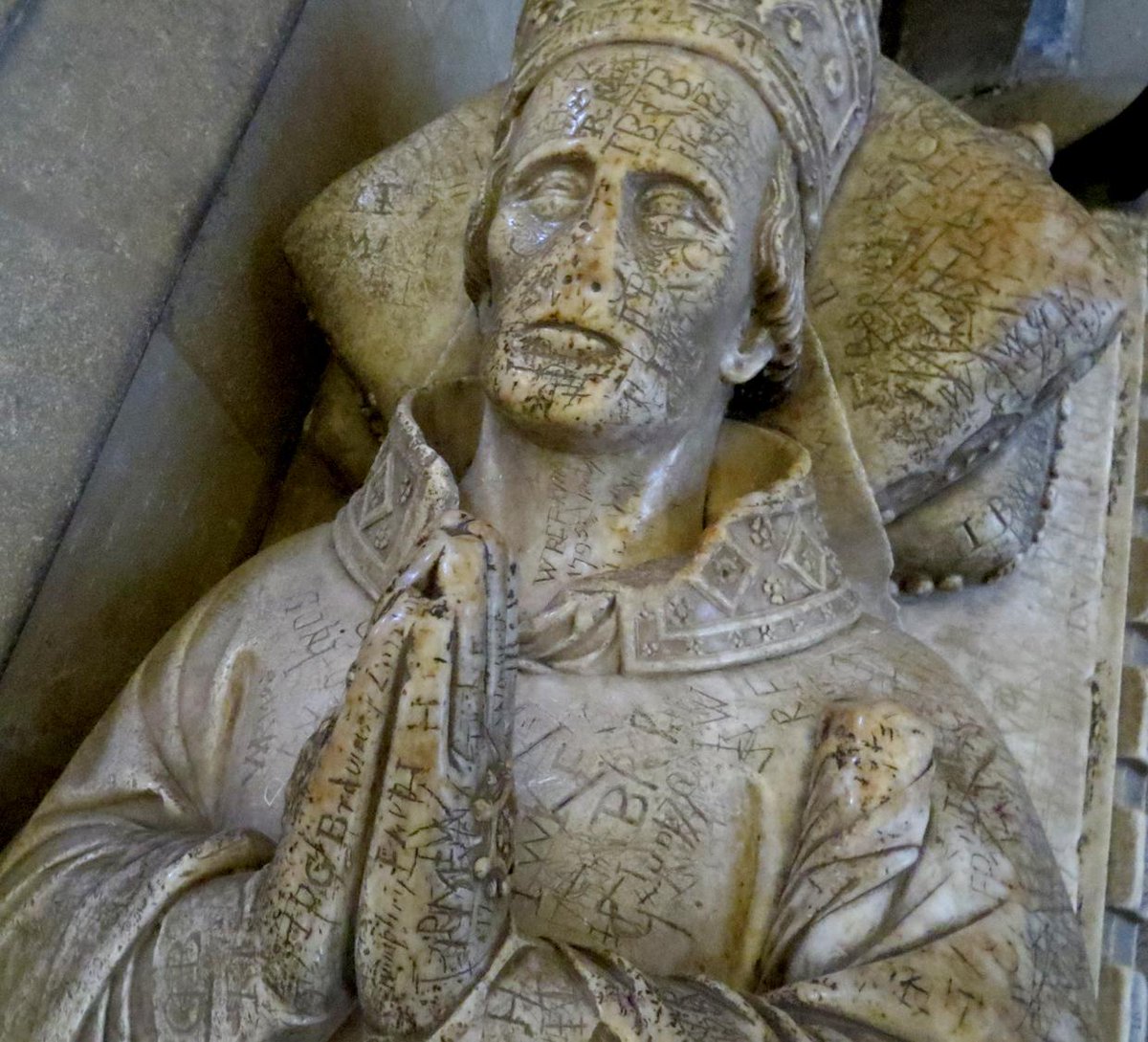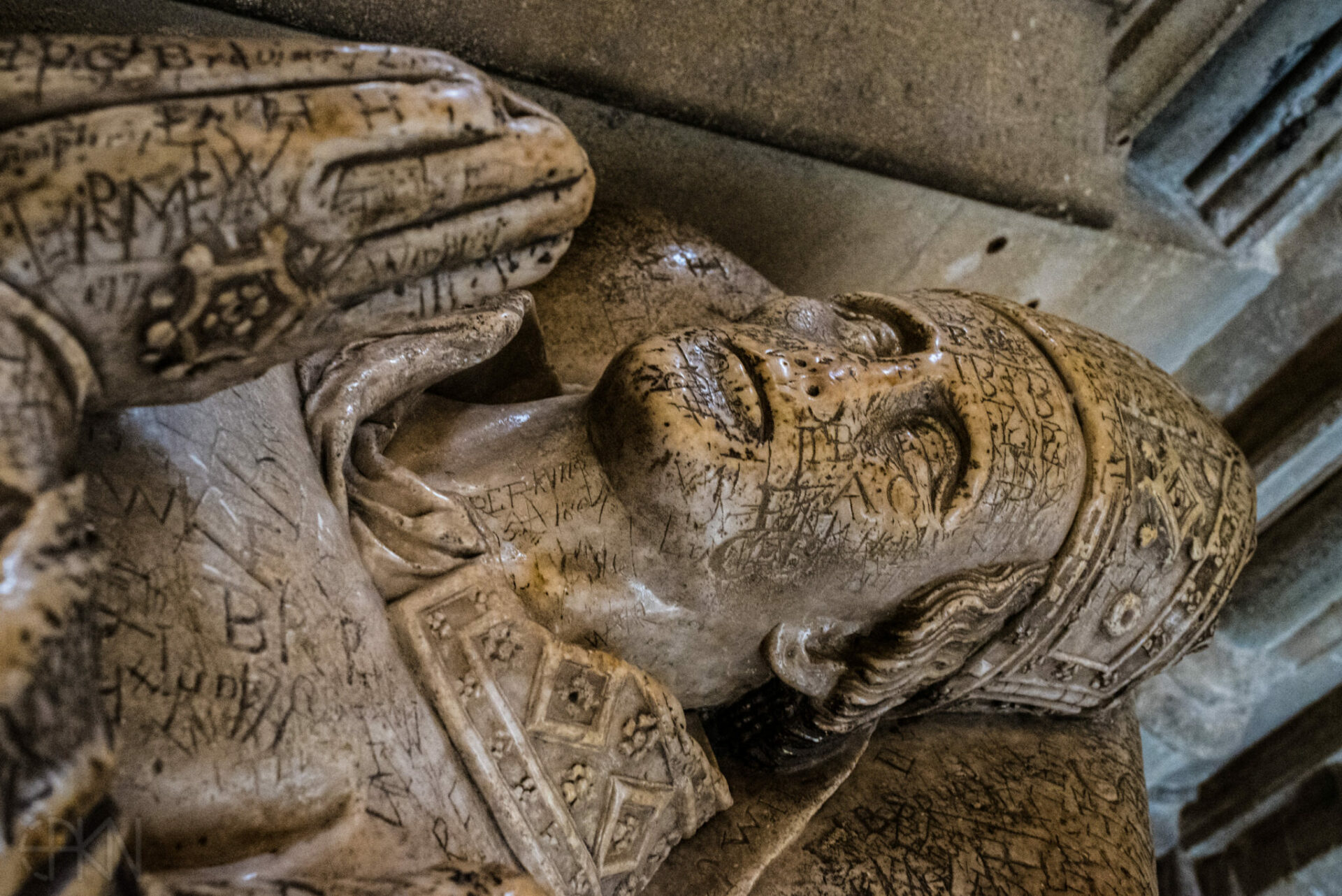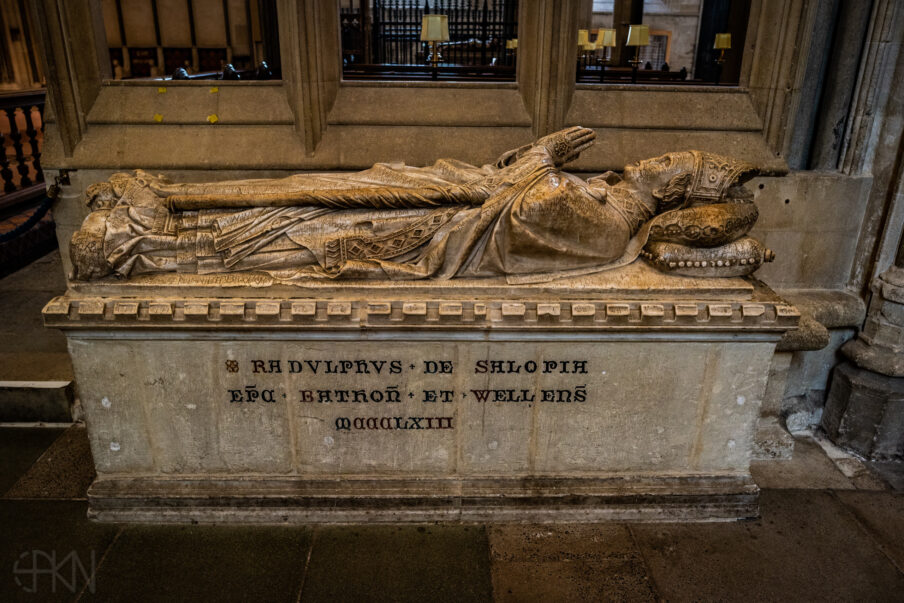Introduction
The alabaster effigy of Ralph of Shrewsbury, who served as Bishop of Bath and Wells until his death in 1363, stands as one of the oldest representations of a high-ranking clergyman. Located within the majestic confines of Wells Cathedral in Somerset, this article delves into the historical backdrop, the significance, and the distinct characteristics of Bishop Ralph’s effigy, alongside his enduring contributions to both the church and its surrounding community.

Historical Context
Originally, Bishop Ralph’s effigy was centrally displayed in the choir area near the high altar of Wells Cathedral. By 1550, it was relocated to its present spot in the North Choir Aisle. The move is evidenced by the pattern and dating of graffiti on the effigy, indicating its current placement since at least the early 1700s. Notably, the left side of the effigy bears significant graffiti markings, whereas the right side remains largely pristine due to its proximity to the wall, yet the effigy remains in a relatively preserved state.

Detailed Description of the Effigy
Depicted in a recumbent position, Bishop Ralph is shown with his head resting on pillows and his hands positioned in prayer. The intricate craftsmanship of the carving is evident, especially in the detailed rendering of his bishop’s staff and mitre. The mitre is particularly distinctive, featuring hinges at both sides secured by pins. This effigy not only commemorates Bishop Ralph but also influenced the creation of Bishop Harewell’s effigy, who passed in 1386. Unlike Bishop Ralph’s effigy, which includes two collared dogs at his feet, Bishop Harewell’s features two hares, humorously referencing his surname.

Bishop Ralph’s Life and Legacy
Emerging from modest beginnings, Ralph of Shrewsbury became a significant ecclesiastical figure, briefly serving as the Chancellor of Oxford University before being unanimously chosen as the Bishop of Bath and Wells in 1329. His consecration occurred without papal approval, compelling him to make a substantial donation to the Roman treasury. Bishop Ralph’s tenure is marked by his pastoral initiatives and notable sanctity. He was instrumental in the enhancement and fortification of various episcopal palaces, including the construction of robust walls and a deep moat around the episcopal palace at Wells. His contributions also extended to the eastern expansion of Wells Cathedral.

Contributions to the Clergy and Community
Bishop Ralph significantly impacted the lives of the minor clergy in Wells. He established a college for vicars, obtained a charter of incorporation, and provided them with housing, a chapel, and a communal hall known as ‘the vicars close.’ This enabled them to live and worship together, supported by an independent endowment. His efforts are commemorated in a panel painting within the cathedral, depicting the vicars expressing gratitude at his feet, a testament to his lasting legacy in the community.
Conclusion
The effigy of Bishop Ralph of Shrewsbury is an exquisite artifact of medieval artistry and a powerful symbol of his profound impact on Wells Cathedral and the broader ecclesiastical community. His dedication to the clergy and his visionary leadership continue to be celebrated through his enduring monuments and the stories encapsulated in his effigy.




